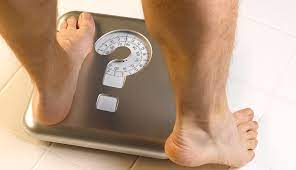Table of Contents

In your search to finding help for weight loss, you may have a few different options. Using a Counsellor Service, where there are reader-supported networks with licensed therapists, may be a good option for you. Read on for further details.
BetterHelp, is one such reader-supported network with licensed therapists, and this may be the best option for you. This website may receive a commission if you buy a service from it. BetterHelp may also pay you a small commission. The information in this article is for informational purposes only. We’ve included the most common reasons for needing help to lose weight.
Predictors of need for help for weight loss
The current study identified several predisposing factors and enabling resources that may contribute to the need for help for weight loss in adult men and women. These factors include age, perceived health, and gender. The study also explored the role of the social context, such as socioeconomic status, when predicting the need for help for weight loss. The study found that poor perceived health was associated with higher levels of need for help for weight loss.
Men’s health behaviour was also associated with the likelihood of seeking help for weight loss. This was particularly true for men. They reported fewer health promotion behaviors, which may explain their lower needs for help. Gender roles may also play a role in the lack of desire to seek help. Some men view asking for help as a sign of weakness or diminished masculinity. Regardless of the reason, seeking help may not be as hard as many men believe.
While it may be difficult to measure the relationship between gender and need for help for weight loss, the results are interesting. If a patient is overweight or obese, their GP is likely to discuss their weight-related care. Even if it is not explicitly demanded, the GP should still be able to provide the assistance they need for weight loss. If a patient has been referred for help for weight loss by a health care provider or through an online resource, it is likely that they are willing to seek it.
Process and outcome goals for weight loss
When setting weight loss goals, it is important to understand the difference between process and outcome goals. Process goals are milestones that you can control, while outcome goals are those that depend on certain outcomes. Setting process goals allows you to measure how much weight you have lost and how many pounds you have maintained. A simple example of a process goal is working out for 30 minutes five days a week. But, you must follow the process in order to see results.
When setting weight loss goals, it’s important to remember that you’re going to have to make a commitment and stick with the process to get there. While losing weight won’t happen overnight, you can set process and outcome goals and see them through to the end. Keeping your mind on the long-term success of your weight loss goal is the key to staying motivated and committed. A SMART goal checklist can be a great tool for achieving weight loss goals.
Achieving your weight loss goal can be a daunting task. Thankfully, you can use smart goal setting techniques to make your goals more achievable. In fact, smart goal-setting can help you lose weight and improve your lifestyle. Process goals focus on the specific steps required to achieve the desired outcome. For example, a person may set a process goal for eating five servings of fruits or vegetables every day, and an outcome goal might be to exercise for thirty minutes a day.

Outcome goals, on the other hand, are a great tool to help motivate you towards a healthier lifestyle. While outcome goals are great, they’re also subject to factors beyond your control. For example, a 60-pound goal may seem achievable, but it could be undermined if you are suddenly injured or sick. You could end up losing more than sixty pounds than you planned. Moreover, you may not achieve your goal if you fail to meet the deadline because of a sudden illness or injury.
The difference between process and outcome goals in weight loss is critical in achieving the desired result. Having a clear destination to aim for can help keep you motivated. When the process becomes too routine, you might begin to wonder whether it is really helping you. In this case, you might need to set a bigger goal to get the desired results. But, by focusing on the end result, you’re more likely to stick with the process and get there.
Barriers to accessing help for weight loss
Lack of Time
Many factors can pose barriers to accessing help for weight loss. One of the most commonly cited barriers was the lack of time. The availability of supportive local resources and interprofessional primary care models was considered a major facilitator of weight loss interventions. However, family physicians without such resources identified a lack of community resources as a major barrier to accessing weight loss interventions. Rural patients perceived travel costs as a barrier to accessing help for weight loss.
The perceived barriers questionnaire was developed and tested on a convenience sample of 30 obese women. The questionnaire was analyzed for inter-item reliability and had a Cronbach’s a coefficient of 0.80, which means that the items have a good level of internal reliability. The questionnaire was also validated over a two-month period, which was deemed sufficient to determine the barriers to accessing help for weight loss.
Low self-esteem
Low self-esteem is another factor that can hinder the motivation to engage in lifestyle change activities. Shyness was also cited as a barrier in a systematic review. Other cultural factors, such as the absence of social support, poor physical fitness, and access to culturally appropriate facilities, could be significant barriers to accessing help for weight loss. However, some cultural norms are more tolerant toward obesity and weight loss, making weight reduction strategies more accessible to women.
Childhood Obesity
The study’s focus on childhood obesity identified multiple intersecting factors that hinder a healthy weight management. These barriers ranged from poor perceptions of obesity and the lack of time of parents to monitor a healthy lifestyle. Another factor involved poor motivation to adhere to weight loss counselling. All of these factors were addressed by health professionals and clinicians in a qualitative study. The findings are likely to be helpful in developing interventions for children and adolescents who are overweight and obese.
Need for Help for Weight Loss
This study focused on the prevalence of overweight and obese men and women in the United States, and identified factors that may predict the need for help. The finding help for weight loss study assessed demographic and health characteristics, as well as perceived health, body weight, physical activity levels, and income. Findings revealed that more than half of overweight and obese individuals were unaware of the availability of assistance in losing weight. Although the findings were mixed, they provide hope for those who need additional support and information to achieve healthy weight management.
Physical activity
Whether you’re looking to lose weight or just maintain your weight, physical activity is a must for weight loss success. Research from the National Weight Control Registry shows that the amount of physical activity required to maintain weight loss is greater when combined with regular exercise. A marathon doesn’t burn off 3,500 calories, but 60 minutes a day of moderate activity will help you keep your weight for years to come. So, what is the best type of physical activity for weight loss?
While it’s important to increase physical activity, there are several limitations of this study. For example, it shows that obese men who do supervised physical activity lost weight more quickly and successfully than those who did not. The Aerobics Center Longitudinal Study reported few obese individuals who were physically active, and Wing et al. noted that the number of obese individuals in this study was relatively low. The findings also showed that physical activity did reduce abdominal adiposity in those who did not engage in physical activity.
Several studies have shown that participants who participate in a daily aerobic activity routine are more likely to lose weight than those who don’t. While some doctors recommend small amounts of moderate activity, experts suggest engaging in an hour-long aerobic activity program five days a week. This amount of physical activity will burn approximately 1200 to 2000 kcal per week. A typical exercise program is based on this recommendation. It’s not necessary to start an exercise program from scratch.
It’s important to choose an activity that you enjoy. By choosing an activity you’ll look forward to, you’ll be more motivated to keep it up. For some people, convenience and companionship are important factors. Partnering up with someone who also likes to exercise is a great way to stay on track. The best physical activity for weight loss is one that is both enjoyable and stress-free. So don’t waste time on a workout, you hate if it doesn’t work for you.
Medication
There are many types of weight management medications. FDA approved medications are used for short-term use. While some are effective, they can have side effects. Pregnant women who are breastfeeding should not use weight-management medications. In rare cases, patients with obesity may benefit from long-term use. Pregnant women should discuss the risks of using weight-management medications with their doctors. If your doctor feels that you may benefit from the use of weight-management medications, he or she can prescribe an alternative.
There are many prescription weight loss drugs on the market. These drugs target areas of the brain that regulate appetite and alter brain chemicals to increase the feeling of fullness and decrease caloric intake. Other types of weight loss medications interfere with fat absorption and increase the feeling of fullness. Unlike dietary changes, weight loss medication is not a quick fix for obesity. Many medications are intended for long-term use. However, this may not always be the best choice.
There are many disadvantages to using drugs. One drawback is that they are expensive. The average cost of a month’s supply of phentermine is approximately $36. Medicare does not cover the cost of these drugs. Luckily, GoodRx offers discounts that bring the cost down to just $10 per month – roughly 70% off the retail cost. While phentermine is effective in helping you lose weight, it is not without risk. Some people experience several adverse effects.
Conclusion
So if you are searching “finding help for weight loss” I hope you have found the information in this article useful. I am always interested to hear from people who a looking for help and read my articles, so please leave a comment. Remember your comments might help me improve the information available to you. Thank you.


